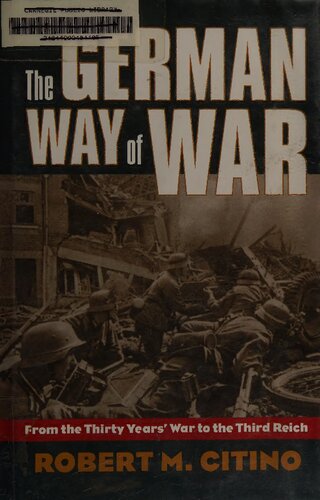

Most ebook files are in PDF format, so you can easily read them using various software such as Foxit Reader or directly on the Google Chrome browser.
Some ebook files are released by publishers in other formats such as .awz, .mobi, .epub, .fb2, etc. You may need to install specific software to read these formats on mobile/PC, such as Calibre.
Please read the tutorial at this link: https://ebookbell.com/faq
We offer FREE conversion to the popular formats you request; however, this may take some time. Therefore, right after payment, please email us, and we will try to provide the service as quickly as possible.
For some exceptional file formats or broken links (if any), please refrain from opening any disputes. Instead, email us first, and we will try to assist within a maximum of 6 hours.
EbookBell Team

5.0
20 reviewsCitino focuses on operational warfare to demonstrate continuity in German military campaigns from the time of Elector Frederick Wilhelm and his great "sleigh-drive" against the Swedes to the age of Adolf Hitler and the blitzkrieg to the gates of Moscow. Along the way, he underscores the role played by the Prussian army in elevating a small, vulnerable state to the ranks of the European powers, describes how nineteenth-century victories over Austria and France made the German army the most respected in Europe, and reviews the lessons learned from the trenches of World War I.
Through this long view, Citino reveals an essential recurrent pattern—characterized by rapid troop movements and surprise attacks, maneuvers to outflank the enemy, and a determination to annihilate the opposition—that made it possible for the Germans to fight armies often larger than their own. He highlights the aggressiveness of Prussian and German commanders—trained simply to find the enemy and keep attacking—and destroys the myth of Auftragstaktik ("flexible command"), replacing it with the independence of subordinate commanders. He also brings new interpretations to well-known operations, such as Moltke's 1866 campaign and the opening campaign in 1914, while introducing readers to less familiar but important battles like Langensalza and the Annaberg.